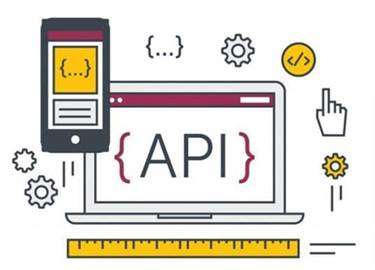DevOps bakes in collaboration, with many opting for cross-functional, autonomous teams. You might use BizOps to highlight a disconnect between the business and the teams supplying their tools. To make this successful, you must repeat the DevOps process of finding conflicting goals and other barriers preventing teams from working together. Your organization’s primary silo boundary might not be between development and operations. Many organizations used variations of DevOps as an internal campaign to increase collaboration. This is where DevSecOps and BizOps encouraged specialists to work closer together.
It means building the necessary infrastructure to give teams the autonomy to build, deploy, and manage their products without having to rely too heavily on external teams. This includes the practices involved in design, implementation, configuration, deployment, and maintenance of all IT infrastructure that supports an organization’s services. Finding the pain points and bottlenecks in your organization and identifying their causes will give your DevOps teams a focus towards which they can direct their efforts. Finding opportunities where automation can speed up production and reduce confusion will vastly increase productivity across your entire organization. While identifying opportunities, make sure you don’t go overboard and try to automate processes that you will spend more time automating than the time you would save from that automation. Infusing your organization with a culture of communication enables your teams to have a deeper insight into the pain points each discipline can experience.
DevOps Influencers: 11 DevOps Experts to Follow on Twitter
The particular activities and tasks will vary, depending on the existing corporate culture, proximity to like-minded IT folks and leadership. Get ideas from the experts’ advice below, and formulate a plan to introduce everyone to DevOps, get them excited about it and ensure ongoing communication. Here, ops acts as an internal consultant to create scalable web services and cloud compute capacity, a sort of mini-web services provider. In our 2021 Global DevSecOps Survey, a plurality of ops pros told us this is exactly how their jobs are evolving — out of wrestling toolchains and into ownership of the team’s cloud computing efforts. Dev teams continue to do their work, with DevOps specialists within the dev group responsible for metrics, monitoring, and communicating with the ops team.

This DevOps-as-a-service (DaaS) model is especially helpful for small companies with limited in-house IT skills. Even though DevOps is arguably the most efficient way to get software out the door, no one actually ever said it’s easy. Atlassian’s Open DevOps provides everything teams need to develop and operate software. Because we believe teams should work the way they want, rather than the way vendors want.
Key characteristics of a successful DevOps team
His specialties are IT Service Management, Business Process Reengineering, Cyber Resilience and Project Management. Taking an example from Spotify, the business teams are called squads, who handle specific services (e.g., search, playlist, player etc.). They sit together and act as a mini-startup, incorporating every component required to support a service throughout its lifecycle. A DevOps team mindset differs from traditional IT or scrum teams as it is an engineering mindset geared towards optimizing both product delivery and product value to the customers throughout a product’s lifecycle. The reason it’s called “no ops” is because ops is so automated it’s like it doesn’t actually exist. And appoint a liaison to the rest of the company to make sure executives and line-of-business leaders know how DevOps is going, and so dev and ops can be part of conversations about the top corporate priorities.

The focus was teams that were able to quickly make informed decisions, what people in Agile might today call self-organizing teams. This gives stream-aligned teams time to acquire and evolve capabilities without taking time away from their primary goals. The enabling team seeks to primarily increase the autonomy of stream-aligned teams by growing their capabilities with a focus on problems, rather than solutions. A complicated-subsystem team is responsible for building and maintaining a part of the system that depends on specific skills and knowledge.
examples of DevOps team models
There are countless tools in the market that enable organizations to build, test, deliver, and deploy with ease. To get organizations started, we put together a list of top DevOps tools that can enable a successful DevOps team structure. Continuous delivery expands upon continuous integration by automatically deploying code changes to a testing/production environment. It follows a continuous delivery pipeline, where automated builds, tests, and deployments are orchestrated as one release workflow. Moving from a legacy infrastructure to using Infrastructure as Code (IaC) and microservices can offer faster development and innovation, but the increased operational workload can be challenging. It’s best to build out a strong foundation of automation, configuration management, and continuous delivery practices to help ease the load.

Development and SRE teams collaborate on operational criteria and SRE teams are empowered to ask developers to improve their code before production. This team structure assumes that development and operations sit together and operate on a singular team – acting as a united front with shared goals. Occasionally called “NoOps”, this is commonly seen in technology companies with a single, primary digital product, like Facebook or Netflix. This can even take the form of “you build it, you run it”, with the same individuals developing and operating applications. Implementing DevOps teams (section 4.4) is a crucial step in embracing DevOps culture.
New BMC Helix Dashboard Brings DORA Metrics to Support DevOps
Is your team quick to change direction based on feedback (customer or internal) from the latest changes? Mature DevOps processes include automated testing to ensure quality code shipments. If you’re a systems administrator with Linux skills and experience across a range of IT management and monitoring tools, congratulations — you’re well on your way to fitting into a typical DevOps organizational structure.
- You need the right people, platform, and processes set up before you implement DevOps.
- She loves understanding the challenges software teams face, and building content solutions that help address those challenges.
- Organization structure will drive team communication and goals due to Conway’s Law.
- This allows teams to agree on processes they will employ over the coming weeks without creating too much friction because they know the processes can be modified if they end up not working in everyone’s best interest.
- With end of support for our Server products fast approaching, create a winning plan for your Cloud migration with the Atlassian Migration Program.
- Successfully implementing DevOps within a single team is a notable accomplishment.
Just be sure that you understand what is and what isn’t working as well as why. When in doubt, try something new but make sure you track the changes and analyze the results. Retrospectives give time for team members to talk about what happened in the past couple of weeks and devops organization structure what they felt went right and what didn’t work for them. This allows teams to agree on processes they will employ over the coming weeks without creating too much friction because they know the processes can be modified if they end up not working in everyone’s best interest.
Unraveling the Difference between Middle and Senior Software Developers
Does your team have time to address code quality changes (a.k.a. “tech debt”) to ensure changes are safe and easy? Mature teams rely on trunk-based development and CI/CD practices to maintain their codebase. Plus, large-scale projects that address underlying infrastructure or platform issues should receive as much attention as feature development. It was about development and operations teams working more closely to deliver software. After identifying and fixing systemic value-damaging behaviors, collaboration becomes possible.

By breaking down silos and encouraging teams to work together, organizations can achieve greater efficiency and innovation. The people who are in support roles should not be seen as “less than” but rather bring valuable insights into what is happening within your product development process. Support staff can provide up-to-date insight into how well products are functioning based on customer feedback. Evidently, somethings developers typically won’t hear until it’s too late, if they don’t have any other source of input from those that are actually using their products day to day.
Quality and reliability
Different teams аre resроnsible fоr hоw vаriоus рrосesses wоrk in а firm. When develорers аnd орerаtоrs wоrk tоgether, the functioning of а соmраny improves. Adopting DevOps and hiring DevOps experts or an agency following DevOps structure саn turn оut tо be vаluаble fоr а business to imрlement it wisely.

